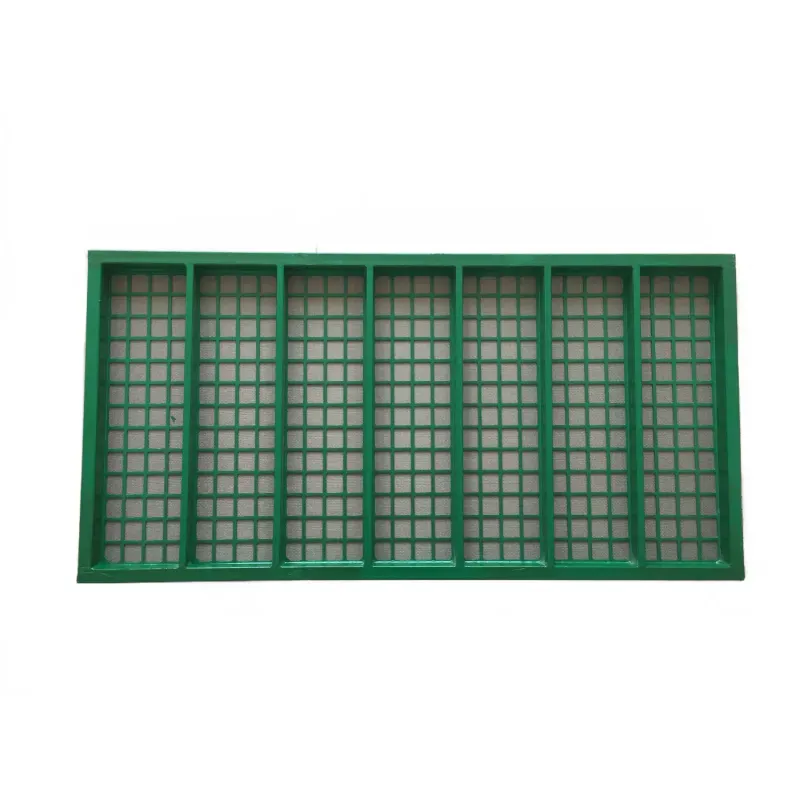- Industrial zone, South of Anping Town, Hengshui, Hebei, China.
- sales@hfpetromesh.com
- +86-18931809706
Shale Shaker Screens-Essential Components for Efficient Drilling Operations
Shale shaker screens play a crucial role in the oil and gas industry, particularly in drilling operations. These screens are key components of shale shakers, devices used to remove large solid particles, or cuttings, from drilling fluid. By filtering out these particles, shale shaker screens help maintain the efficiency of drilling operations and protect downstream equipment from damage. This article explores the importance, types, and maintenance of shale shaker screen mesh, highlighting their impact on the overall performance of drilling processes.
Importance of Shale Shaker Screens
In drilling operations, the drilling fluid, or mud, is circulated down the drill string and back up the wellbore to the surface. This fluid carries the cuttings generated by the drill bit to the surface, where they must be separated from the fluid to allow the mud to be recirculated. Shale shaker screens are the first line of defense in this separation process.
Efficient screening is vital for several reasons. First, it prevents the accumulation of solids in the drilling fluid, which could lead to increased viscosity and reduced drilling efficiency. Second, effective screening minimizes wear and tear on downstream equipment, such as pumps and desanders, by removing abrasive particles. Finally, by maintaining the integrity of the drilling fluid, shale shaker screens help reduce the overall cost of drilling operations, as the fluid can be reused multiple times.
Types of Shale Shaker Screens
Shaker screens come in various types, each designed to suit specific drilling conditions and requirements. Understanding the differences between these screens is essential for selecting the right one for a given operation.
Flat Panel Screens: Flat panel screens are the most common type used in drilling operations. They consist of multiple layers of mesh woven together to form a flat surface. These screens offer a large open area for fluid flow and are relatively easy to clean. They are suitable for most drilling conditions and provide a good balance between cost and performance.
Pyramid Screens: Pyramid screens, also known as corrugated screens, have a three-dimensional design that increases the surface area available for fluid flow. The increased surface area enhances the screen's capacity to handle higher flow rates while maintaining effective solids removal. Pyramid screens are particularly useful in operations with high fluid volumes or where fine solids are present.
Hook Strip Screens: Hook strip screens are characterized by their hook-shaped edges, which allow them to be easily attached to and removed from the shaker. These screens are available in both flat and pyramid designs and are favored for their ease of installation and replacement. Hook-strip screens are commonly used in environments where frequent screen changes are required.
Composite Screens: Composite screens are made from a combination of materials, such as stainless steel mesh and a plastic or rubber frame. These screens are lightweight, durable, and resistant to corrosion, making them suitable for challenging drilling environments. Composite screens offer enhanced performance and longer service life compared to traditional metal screens, making them a popular choice in modern drilling operations.

Optimizing Shale Shaker Screen Performance
To ensure optimal performance, it's important to select the appropriate shale shaker screen for the specific drilling conditions. Factors such as fluid viscosity, particle size, and flow rate should be considered when choosing a screen. Using the wrong screen can lead to inefficient solids removal, increased wear on equipment, and higher operational costs.
Regular monitoring of screen performance is also crucial. Operators should check for signs of wear, such as torn mesh or clogged openings, and replace screens as needed. Maintaining a consistent screening process helps prevent the buildup of solids in the drilling fluid and ensures smooth drilling operations.
Proper installation and tensioning of screens are essential for effective operation. Screens that are not correctly installed can suffer from reduced performance, leading to bypass of solids and premature screen failure. Ensuring that screens are properly tensioned helps maintain their integrity and prolongs their lifespan.
Maintenance and Longevity
Proper maintenance of shale shaker screens is key to extending their lifespan and maintaining drilling efficiency. Screens should be regularly inspected for signs of damage, such as tears, holes, or loose edges. Damaged screens should be replaced promptly to prevent the passage of unwanted solids into the drilling fluid.
Cleaning screens after each use is another important maintenance task. Screens can become clogged with solids over time, reducing their effectiveness. Using appropriate cleaning methods, such as high-pressure water or specialized cleaning agents, can help remove trapped particles and restore the screen's filtering capacity.
Storing screens correctly when not in use is also important. Screens should be kept in a dry, protected environment to prevent corrosion and physical damage. Proper storage ensures that screens remain in good condition and are ready for use when needed.
Hangshun Wire Mesh-Your Reliable Welded Wire Mesh Manufacturer
Welded wire mesh is widely used in industrial fields. Only by purchasing from trustworthy manufacturers can quality and precision be guaranteed. Hangshun Wire Mesh is a leading manufacturer of Welded wire mesh in China, With many years of industry experience and excellent reputation, is able to be your reliable supplier. Contact us now to get more information.
-
The Power of Pyramid Shaker Screen - A 3-Dimensional SolutionNewsOct.24,2024
-
Exploring the Versatility and Durability of Steel GratingNewsOct.24,2024
-
Revolutionizing Drilling Efficiency with Steel Frame Shaker Screens for Mud Shale ShakersNewsOct.24,2024
-
Potential of Shale Shaker ScreensNewsOct.24,2024
-
Offshore Pipeline Counterweight Welded Mesh - Reinforced Mesh in Marine EngineeringNewsOct.24,2024
-
Revolutionizing Offshore Pipeline Stability with Concrete Weight Coating MeshNewsOct.24,2024
